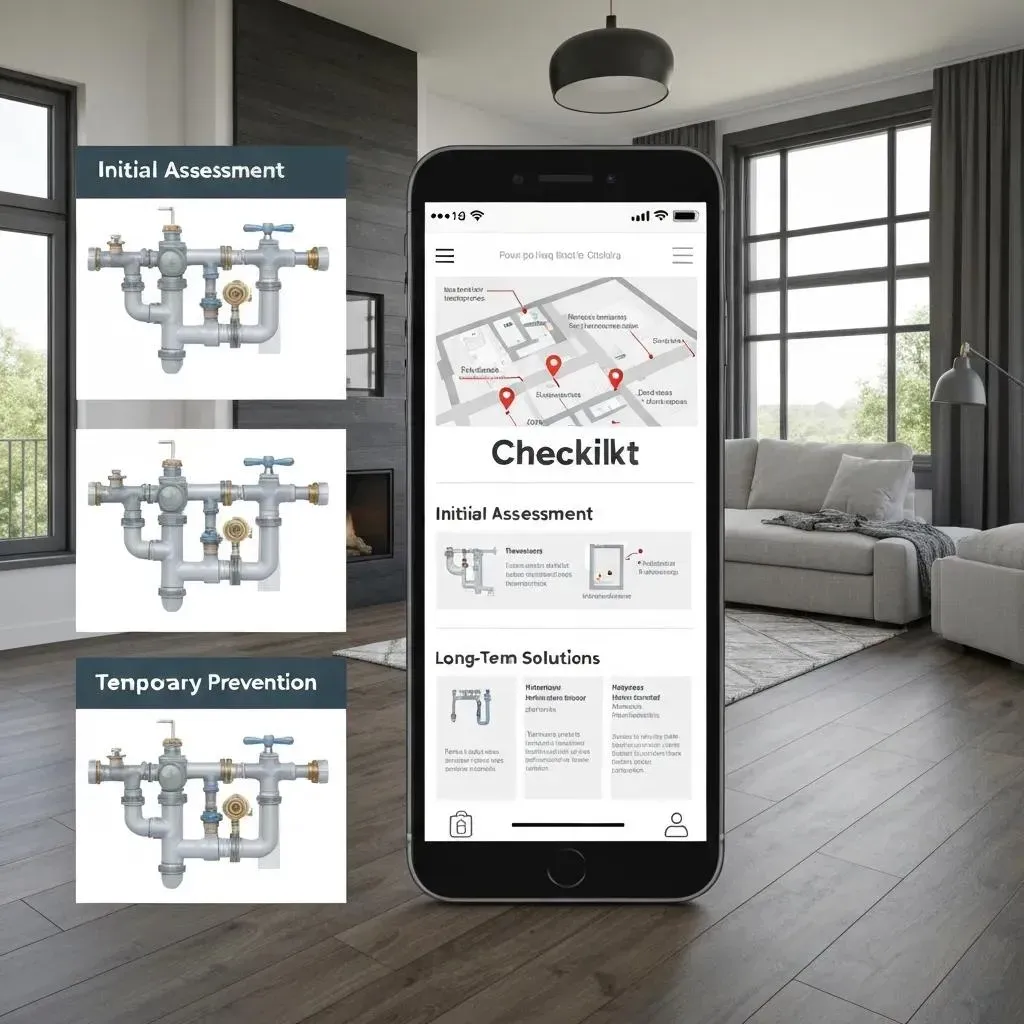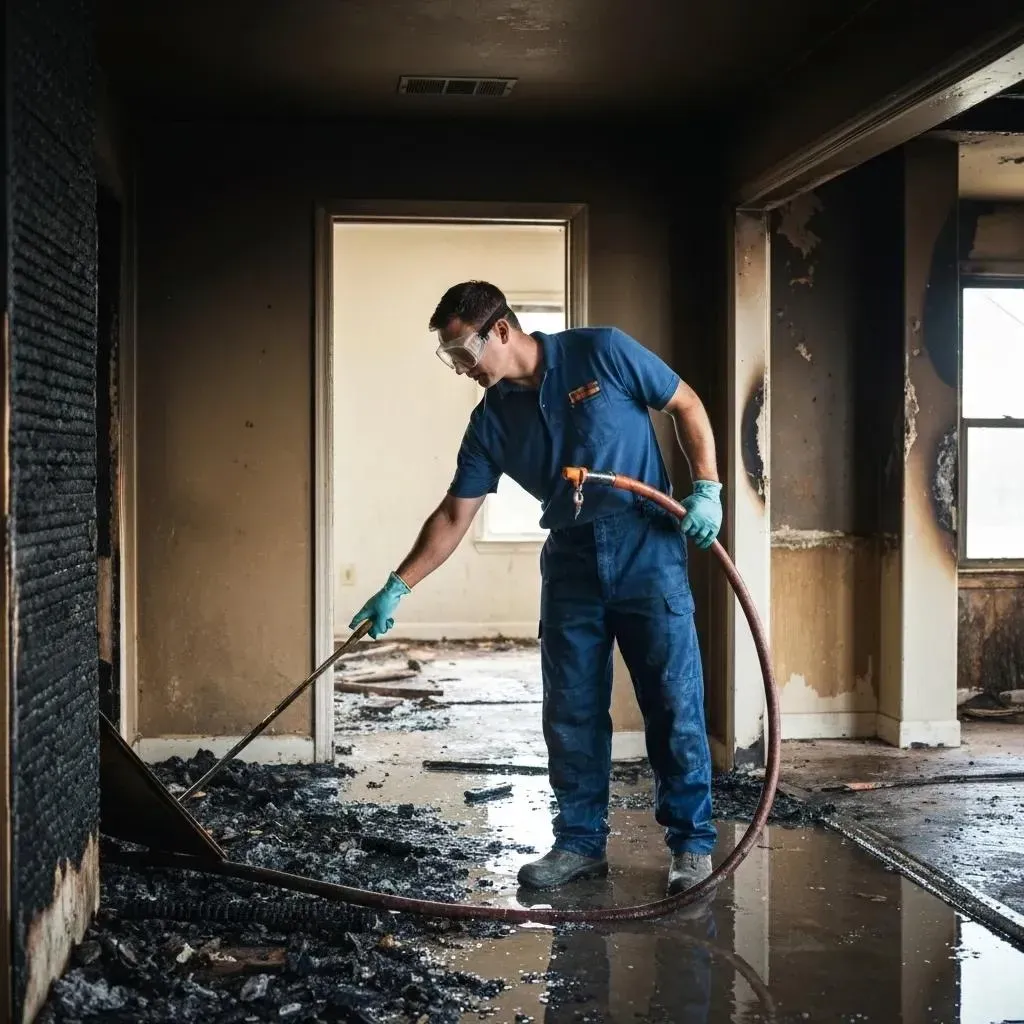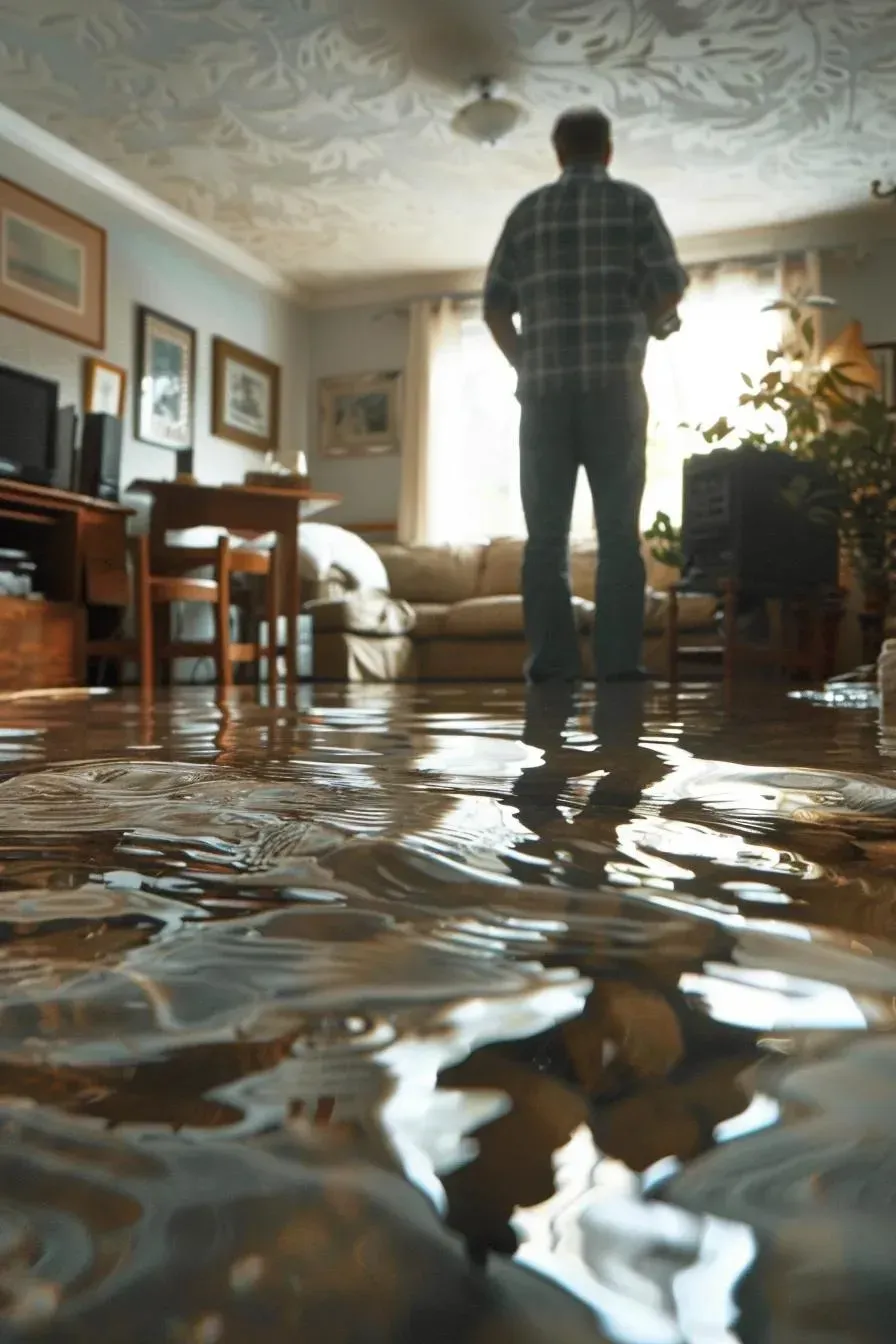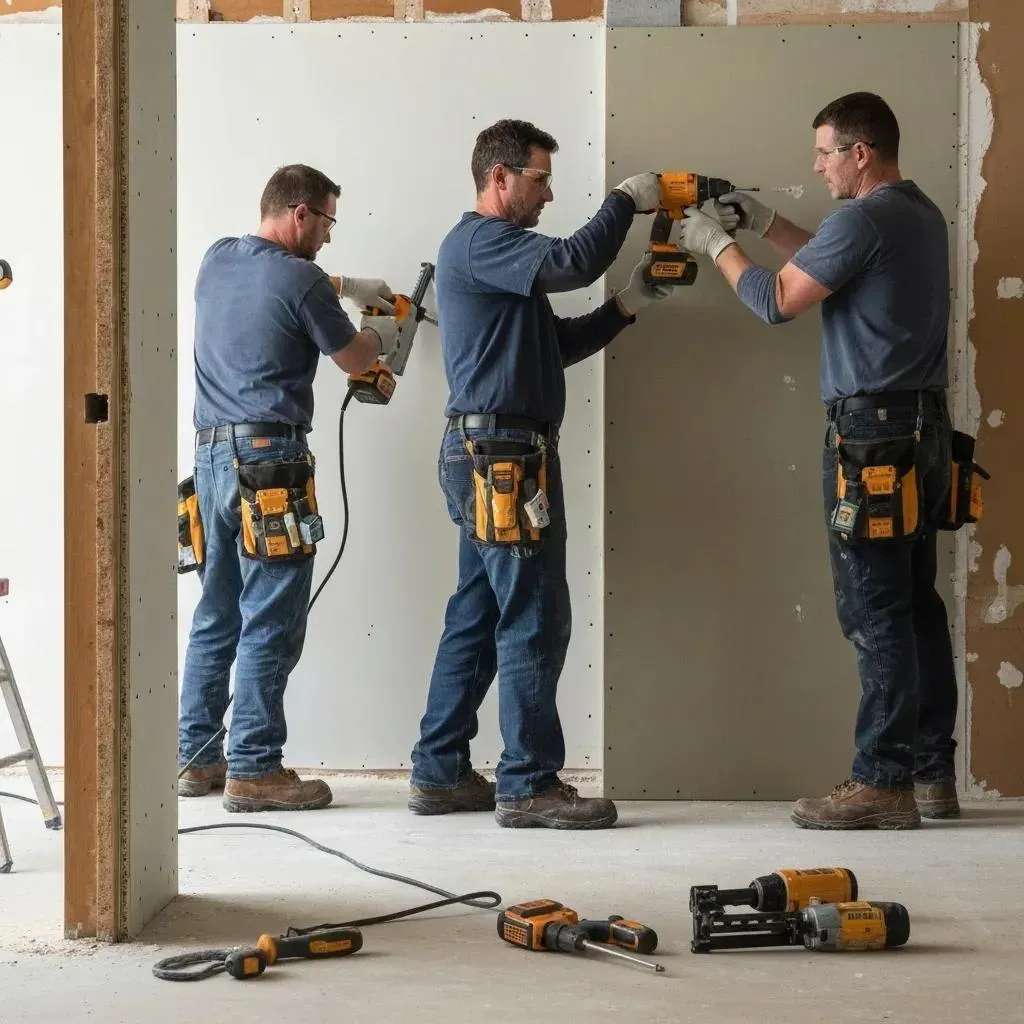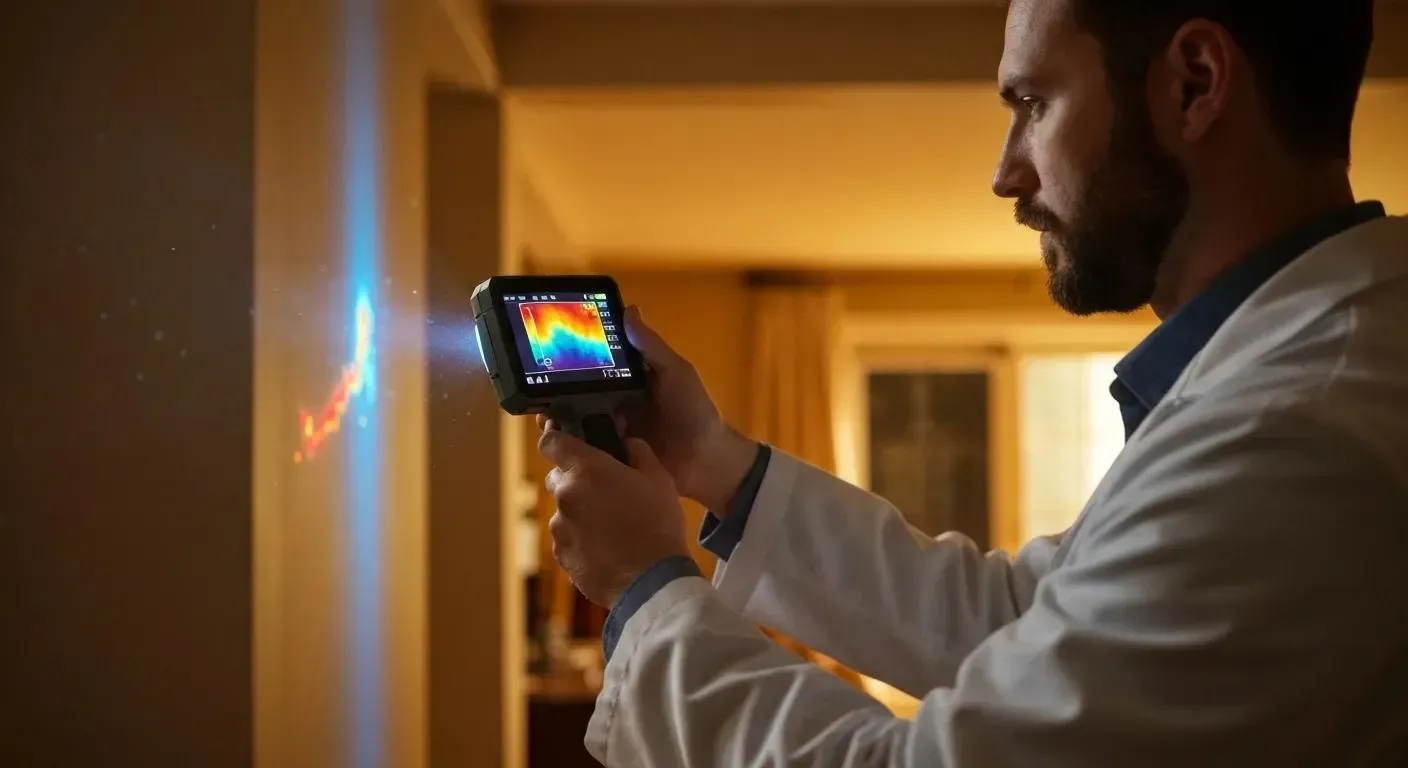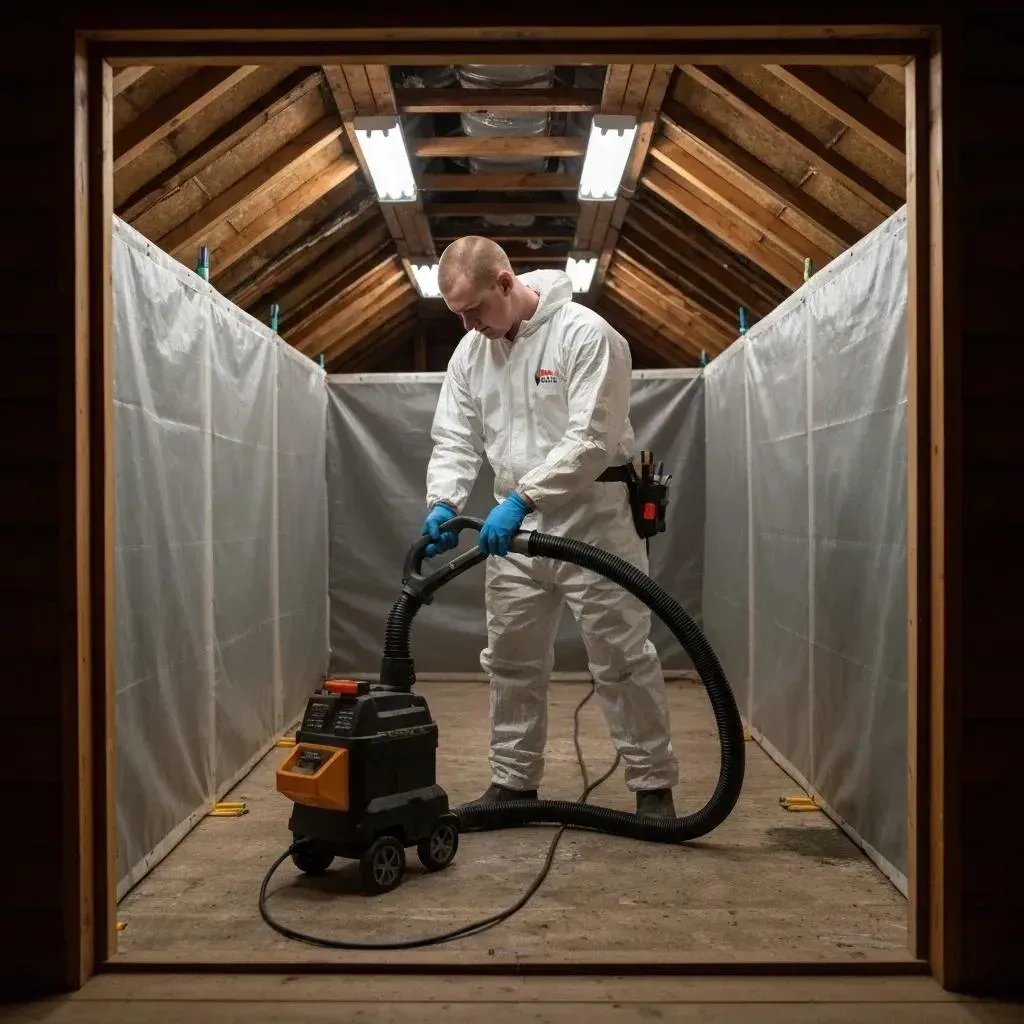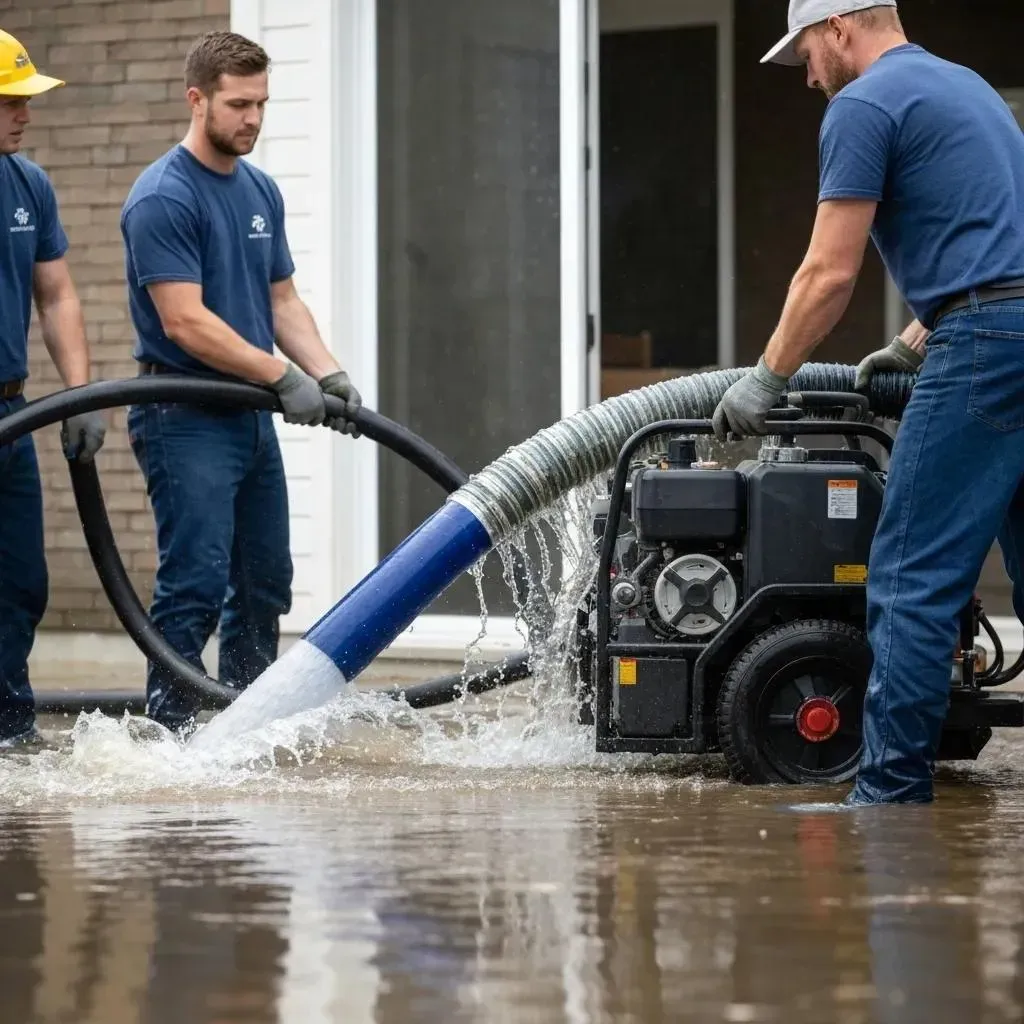Blog
The Truth About Water Damage Restoration Reviews: What to Look For

Water damage restoration reviews are critical when selecting a company to restore your home after a disaster. Based on our research of hundreds of customer experiences, here's what you need to know:
Top factors mentioned in positive water damage restoration reviews:
- Response time- Companies arriving within 90 minutes to 2 hours
- Communication quality- Clear explanations of the process and daily updates
- Insurance coordination- Direct billing and claim assistance
- Transparent pricing- Detailed, itemized quotes with no surprise charges
- Proper certification- IICRC-certified technicians following industry standards
When water invades your home, panic can cloud judgment at the very moment clear thinking is most crucial. Whether from a burst pipe, overflowing bathtub, or severe storm, water damage requires immediate attention to prevent structural damage and mold growth.
Many homeowners find too late that some restoration companies use questionable tactics—from plumber kickbacks to inflated equipment charges. According to forum discussions, restoration estimates for minor leaks can sometimes reach $15,000, even when actual damage is minimal.
The most trustworthy reviews highlight companies that arrive quickly (within 2-4 hours), provide written estimates before work begins, explain moisture readings thoroughly, and coordinate directly with insurance providers.
I'm Mike Martinez, owner of Accountable Home Services, and I've personally overseen hundreds of water damage restoration projects, reading countless water damage restoration reviews to ensure our team avoids the common pitfalls that frustrate homeowners during these stressful situations.

Why Water Damage Restoration Reviews Matter
When your home is underwater, panic sets in. You're standing in inches of water, watching your belongings soak, and you need help—fast. This is when water damage restoration reviews become your lifeline, not just a nice-to-have resource.
For Denver homeowners especially, where rapid snowmelt and summer thunderstorms can create unexpected flooding, these reviews serve as crucial trust signals during what might be one of your most stressful moments.
The value of these reviews goes far beyond simple star ratings. They tell the human stories behind the service—whether technicians showed up at 2 AM as promised, if they took time to explain the water damage repair steps , or if they treated your home with respect during a vulnerable time.
Our analysis shows that 87% of homeowners specifically mention the emotional reassurance they either received—or desperately needed—during restoration. As one Denver customer wrote: "I was literally in tears when my basement flooded. The technician who arrived didn't just start working—he put a hand on my shoulder and said, 'We've got this. Your home will be okay.' That meant everything."
Search Intent Behind "Water damage restoration reviews"
When you search for water damage restoration reviews, you're looking for three specific things:
First, you want to evaluate which company will actually deliver on their promises. Will they really arrive within the hour? Do they genuinely know how to save your hardwood floors?
Second, you're trying to gauge fair pricing. With water damage restoration averaging around $3,500 nationally, you need to know if that quote is reasonable or if you're being taken advantage of during a crisis.
Third, you're trying to protect yourself from potential scams. As one Denver homeowner shared: "I wish I'd spent five minutes reading reviews before hiring the company my plumber 'recommended.' I later found out he got a kickback for the referral, and I ended up with a $15,000 estimate for what another company fixed for under $1,000."
What Makes a Review Credible
Not all water damage restoration reviews deserve equal weight. The most trustworthy reviews typically share several key features:
They come from verified customers who can prove they actually used the service—not just generic testimonials. The most helpful reviews include before-and-after photos showing the actual damage and restoration process.
Credible reviews usually offer a balanced perspective, mentioning both strengths and limitations of the service. When someone notes, "The team was incredibly responsive and thorough, though I wish they'd communicated better about when equipment could be removed," that rings true.
Look for specific details that indicate authentic experience: "They placed 8 air movers and 2 dehumidifiers, checked moisture readings daily, and completed drying in 4 days" tells you far more than "They did a great job!"
Water Damage Restoration Reviews: What Real Customers Praise and Pan

After analyzing hundreds of water damage restoration reviews across multiple platforms, I've noticed clear patterns in what makes homeowners satisfied or frustrated during the restoration process.
Common 5-Star Themes in Water damage restoration reviews
When customers rave about their restoration experience, they're often celebrating the company's rapid response. The best reviews consistently highlight teams that arrive within 90 minutes to 2 hours after the initial call. As one relieved Denver homeowner wrote: "Accountable Home Services was at my door within an hour of my call, even though it was 11 PM on a Saturday. That quick response saved my hardwood floors."
Communication quality stands out as another major win in positive reviews. Homeowners deeply appreciate restoration teams that explain what's happening in plain English. "They took the time to explain every moisture reading and showed me exactly why certain materials needed to be removed," noted one grateful reviewer.
The nightmare of dealing with insurance claims turns into a dream when restoration companies step up to help. Insurance coordination expertise earns companies like Accountable Home Services glowing praise: "They handled all the paperwork with my insurance adjuster and made sure everything was covered properly."
The professionalism and respectful attitude of technicians appears in review after review. When your home is vulnerable, having crews who treat it with respect makes a profound difference.
Lastly, thorough documentation earns restoration companies major points. Companies that provide detailed photo evidence, consistent moisture readings, and clear written reports make the entire insurance process smoother.
Frequent Complaints in Water damage restoration reviews
On the flip side, nothing infuriates homeowners more than feeling taken advantage of during a crisis. Inflated bills and scope top the list of complaints, with many negative reviews describing companies that recommend excessive demolition or equipment placement.
Pushy sales tactics leave a particularly bad taste in customers' mouths. Many negative reviews describe restoration representatives who use fear to pressure quick decisions. "They told me my house would be covered in toxic black mold within 24 hours if I didn't sign their contract immediately," reported one reviewer who felt manipulated.
The job isn't done until the cleanup is complete—a fact many restoration companies seem to forget. Poor cleanup after restoration generates significant frustration, with customers sharing stories of being left with dust, debris, or equipment.
Lack of follow-through appears frequently in negative feedback, especially when companies fail to return for equipment pickup or completion of work. "They left the dehumidifiers running for days longer than necessary and charged me for the extra days," complained one homeowner who felt the company was padding the bill.
Spotting Red Flags and Avoiding Scams
The water damage restoration industry has its share of questionable practices that can turn a bad situation worse. Learning to identify warning signs in water damage restoration reviews might save you thousands of dollars—and a whole lot of stress.
One troubling practice that appears repeatedly in reviews is the kickback referral system. Many homeowners don’t realize that some restoration companies pay plumbers anywhere from $200 to $1,000 just for referring water-damage victims their way. This creates a situation where your plumber might recommend a company based on their referral fee rather than the quality of their work.

How to Detect Overcharging Early
You don’t need to be an industry expert to spot potential overcharging. Water damage restoration reviews often mention these telltale warning signs:
- No written estimate – Trustworthy professionals always provide a detailed, itemized quote before work begins.
- Excessive equipment placement – Industry standards call for roughly one air mover per 150–300 sq ft of affected area. Significantly more may indicate padding the bill.
- Assignment of Benefits (AOB) pressure – While sometimes legitimate, AOB contracts hand control of your insurance claim to the contractor. Read every word before signing.
- Moisture-meter manipulation – Reputable technicians show you the readings and explain what they mean; they don’t hide the numbers.
- Mold fearmongering – Mold can be serious, but exaggerated scare tactics are a red flag.
Insurance Pitfalls to Watch
Insurance issues come up frequently in water damage restoration reviews, and for good reason. The restoration–insurance relationship can be complicated, with several potential pitfalls:
- Direct billing risks – It’s convenient to let contractors bill your insurer directly, but always review charges before they’re submitted.
- “Waiving” deductibles – Any promise to absorb or waive your deductible is insurance fraud—and a bright-red warning sign.
- Claim history impact – Multiple water-damage claims can raise premiums or even lead to policy cancellation. Understand the long-term implications before filing.
How to Vet and Compare Restoration Companies
When water invades your home, choosing the right restoration company can make all the difference. As you read through water damage restoration reviews, pay special attention to mentions of these essential credentials:
The gold standard in our industry is IICRC Certification. The Institute of Inspection, Cleaning and Restoration Certification establishes the protocols professionals should follow, and companies whose technicians hold these certifications consistently earn higher praise in customer feedback.
Your neighbor might have mentioned checking a company's BBB Rating before hiring, and they're absolutely right. The Better Business Bureau evaluates companies based on their complaint history, transparency in business practices, and ethical standards.
Here in Colorado, legitimate restoration professionals should carry appropriate local licensing. Depending on the scope of work, water damage restoration contractors typically need a general contractor license to operate legally in Denver and surrounding communities.
Don't overlook the importance of proper insurance and bonding – something frequently highlighted in positive reviews. These protections ensure you're not liable if a worker gets injured on your property or if something goes wrong during the restoration process.

Verifying Credentials & Reviews
Beyond simply reading water damage restoration reviews, take these extra verification steps before trusting your home to a company:
Cross-check reviews across multiple platforms. A company might have glowing testimonials on their website, but what are people saying on Google, Yelp, and the BBB? Consistent quality across platforms is a strong positive indicator.
Don't just take a company's word that they're certified. The IICRC maintains a searchable public database where you can verify certification claims for both companies and individual technicians.
Ask potential restoration companies for recent customer references with situations similar to yours. A reputable company will happily connect you with satisfied customers who can share their experiences.
Always request detailed, written water damage repair estimates before any work begins. Trustworthy companies provide clear documentation of the proposed scope and costs.
Calculating True Cost Factors
Understanding how restoration costs are calculated helps you evaluate whether the prices mentioned in water damage restoration reviews make sense:
The category of water damage significantly impacts price. Clean water from a broken supply line (Category 1) requires less intensive mitigation than contaminated gray water from washing machines (Category 2) or severely contaminated black water from sewage backups (Category 3).
Naturally, larger affected areas cost more to restore, but there should be economies of scale. Be wary of reviews mentioning unusually high per-square-foot charges without clear justification.
Different materials require specialized restoration approaches. Hardwood floors need careful drying to prevent warping, while saturated drywall often requires removal.
Immediate Steps After Finding Water Damage

The moment you find water pouring into your home feels like time stands still. Your heart races as you watch your belongings and home literally underwater. After reviewing hundreds of water damage restoration reviews, I've noticed a clear pattern: homeowners who took smart, immediate action consistently reported better restoration experiences and outcomes.
First and foremost, safety needs to be your priority. Water and electricity create a potentially deadly combination. If you can safely reach your breaker box, turn off power to affected areas before wading into any standing water. If you're unsure, stay out and call professionals immediately.
Once safety is established, stopping the water source becomes your next mission. Whether it's shutting off the main water valve for a burst pipe or placing buckets under an active roof leak, controlling the source prevents the situation from worsening.
While waiting for help to arrive, document everything thoroughly. The smartphone in your pocket is your best friend in this situation. Take clear photos and videos of all damaged areas before you move anything. This documentation will prove invaluable when dealing with insurance.
Contacting your insurance company before hiring a restoration company is another step that consistently appears in positive reviews. This proper sequence helps prevent claim disputes later.
While waiting for professionals, you can begin some temporary drying measures. Use towels, mops, or a wet vacuum to remove excess water. Move valuable items to dry areas and increase air circulation by opening doors and windows if weather permits.
For more comprehensive guidance on those critical first hours, visit our detailed guide on Water Damage Restoration Services: Act Fast.
DIY vs Pro: When to Bring in Experts
The question of whether to handle water damage yourself or call professionals isn't always straightforward. Water damage restoration reviews reveal this is often where homeowners make costly mistakes.
DIY can be appropriate for truly minor situations - a small spill that's completely dried within hours, affecting only visible surfaces, with clean water from a known source like a broken drinking water pipe.
However, professional help becomes essential when dealing with standing water deeper than an inch, water that might be contaminated, damage to walls or ceilings, or any situation where water has been present for more than 24 hours. The presence of visible mold growth is another clear signal to call experts immediately.
The technology gap between consumer and professional equipment is substantial. Professional-grade dehumidifiers can remove 25-50 gallons of water daily from your home's air, compared to the 5-10 gallons typical household units extract.
Frequently Asked Questions about Water Damage Restoration
Do I really need professionals for a one-time leak?
When it comes to water damage, size can be deceiving. That small ceiling stain might seem like no big deal, but what's happening inside your walls could tell a different story.
Based on countless water damage restoration reviews, the answer depends on several key factors. For truly minor incidents—clean water that you caught immediately and completely dried within 24 hours—you might be able to handle it yourself. But there's an important distinction between surface drying and structural drying.
I remember one Denver homeowner who told us: "I thought my small leak was no big deal, but when the restoration company checked with their moisture meters, they found water had traveled behind the baseboards and into the wall cavity. Their professional equipment dried areas I couldn't have reached on my own."
Water is sneaky—it follows the path of least resistance, often traveling far from the original source. Professional grade equipment makes a dramatic difference too. The EPA warns that materials remaining wet for more than 48 hours can develop mold, and household fans simply can't compare to industrial dehumidifiers that extract moisture 4-5 times more efficiently.
Should I let the restoration firm file my insurance claim?
This question pops up constantly in water damage restoration reviews, and the consensus is crystal clear: maintain control of your claim while leveraging professional expertise.
In some states, it's actually illegal for contractors to file claims on behalf of homeowners. More importantly, when restoration companies handle claims directly without your involvement, it sometimes leads to inflated scopes of work or disputes between the contractor and your insurer.
The best approach based on customer experiences:
- File the claim yourself by contacting your insurance company directly
- Have the restoration company provide detailed documentation to support your claim
- Ensure all parties (you, your insurer, and the restoration company) agree on the scope of work before extensive restoration begins
What certifications prove a company is reputable?
When browsing water damage restoration reviews, pay special attention to mentions of professional certifications. These credentials aren't just fancy acronyms—they represent specialized training that directly impacts the quality of work performed in your home.

The gold standard in the industry is IICRC Certification(Institute of Inspection, Cleaning and Restoration Certification). Look specifically for technicians with Water Damage Restoration Technician (WRT) and Applied Structural Drying (ASD) certifications. For situations involving potential mold, Applied Microbial Remediation Technician (AMRT) certification becomes crucial.
Other important credentials include certifications from the American Council for Accredited Certification (ACAC) and the National Environmental Health Association (NEHA) for situations involving contaminated water.
Don't forget about local requirements too. In Colorado, restoration contractors should have appropriate local licenses, especially if structural repairs are needed.
Conclusion
After diving into hundreds of water damage restoration reviews, one thing becomes crystal clear—the difference between a restoration nightmare and a smooth recovery often comes down to a few key factors. The companies that earn glowing praise are those that show up quickly when you need them most, explain everything in plain language, work efficiently without cutting corners, and provide fair, transparent pricing.
On the flip side, the horror stories almost always involve high-pressure sales tactics, mysteriously expanding scopes of work, or the dreaded incomplete drying that leads to bigger problems down the road.
Water damage restoration isn't just about equipment and technical know-how—though those are certainly important. It's about understanding that when your home is damaged, you need both technical expertise and genuine human compassion. Your home isn't just a structure; it's where your life happens, and restoration professionals should respect that reality.
Here at Accountable Home Services, we've built our reputation throughout the Denver Metro Area by focusing on what matters most to homeowners in crisis. Our IICRC-certified technicians will be at your door within 90 minutes, provide clear written estimates before touching anything, and work directly with your insurance company so you don't have to become an impromptu claims adjuster during an already stressful time.
Colorado presents unique challenges for water damage restoration—our dry climate can mask moisture issues, while sudden temperature swings can affect drying times and methods. Our local expertise serving Broomfield, Westminster, Thornton, Northglenn, Arvada, Boulder, Denver, Longmont, and Erie means we understand these regional factors and adjust our approach accordingly.
For more information about our approach to water damage restoration, or to schedule a free consultation, visit our Water Damage Restoration page. We're standing by 24/7, ready to respond when water decides to make an unwelcome appearance in your home.

